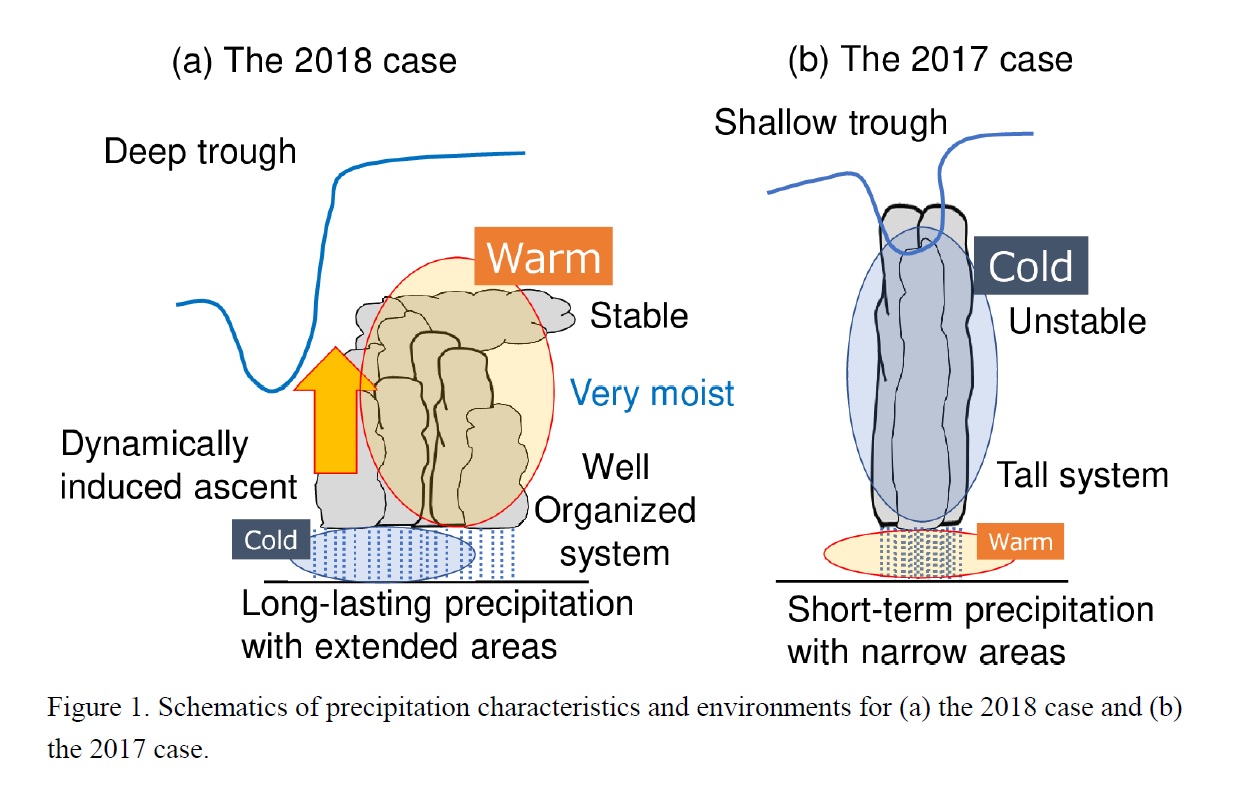Graphical Abstract
Tsuji, H., C. Yokoyama, and Y. N. Takayabu, 2020: Contrasting features of the July 2018 heavy rainfall event and the 2017 Northern Kyushu rainfall event in Japan. J. Meteor. Soc. Japan, 98, 859-876.
Special Edition on Extreme Rainfall Events in 2017 and 2018
https://doi.org/10.2151/jmsj.2020-045
Graphical Abstract
Plain Language Summary:
Precipitation characteristics and environment are compared between two rainfall events in Japan: the July 2018 heavy rainfall event (2018 case) and the 2017 Northern
Kyushu rainfall event (2017 case). The 2018 case was characterized by long-lasting heavy precipitation over a wide area, well-organized moderately tall precipitation systems, stable and very
moist environment compared with the climatology, and large quasi-geostrophic forcing associated with an upper tropospheric trough. In contrast, the 2017 case was characterized by short-term
extreme precipitation over a narrow area, exceptionally tall precipitation systems, unstable and moist environment compared with the climatology, and weak quasi-geostrophic forcing. These contrasts
are similar to those found between composites of extremely heavy rainfall events and extremely tall convection events in the previous statistical study by Hamada and Takayabu
(2018, doi:10.1175/JCLI-D-17-0632.1).
Highlights:
- Contrasting precipitation properties and environments are observed between two rainfall events in Japan: the July 2018 heavy rainfall event and the 2017 Northern Kyushu rainfall event.
- The contrast is similar to that found between composites of extreme rainfall events and extremely tall convection events included in the previous statistical study by Hamada and Takayabu (2018).







